Products
Reusable, reliable, platform-independent device drivers and software with detailed architecture and design ready to be integrated.
Board Support Package (BSP)
Board Support Package (BSP) help to speed up the development process, whether for application software or device drivers. The BSP implements all peripherals available on the MCU with highly dynamic configuration and makes all available peripheral channels accessible. It can be used in both worlds, RTOS and bare-metal, and is compatible between C and C++ programming. It was developed with the C99 standard.
Our list of available BSPs is limited by MCUs with different architectures, currently we support MIPS and ARM Cortex-M. However, our experience shows that projects only need a certain selection of MCUs, but with stable, well-tested and highly configurable BSPs and HAL interfaces that can be safely used with RTOS. Each BSP comes with a sample program and a software design document for evaluation purposes.
Microchip PIC32MK

The PIC32MK was specially developed for industrial, automotive and motor control applications. It uses the MIPS architecture, a 32-bit MCU family that operates at frequencies up to 120 MHz and supports up to 1 MB Flash memory and 256 kB SRAM. It features CAN FD and USB as well as numerous PWM and quadrature encoder interfaces (QEI) that can support various motor control applications – view details





NXP LPC54xx

The LPC54114 is equipped with a dual-core MCU with ARM Cortex-M0+ and Cortex-M4, a 32-bit MCU family that operates at frequencies up to 150 MHz and supports up to 512 kB flash memory and 64 kB SRAM. It has numerous UART, PWM, SPI and I2C channels as well as a DMIC subsystem – view details





ST STM32G4xx

The STM32G491 is a powerful MCU with ARM Cortex-M4, a 32-bit MCU family that operates at frequencies up to 170 MHz and supports up to 512 kB flash memory and 96 kB SRAM. It has peripherals such as CAN, QSPI, QEI, UART, PWM, SPI and I2C channels. In addition, it has mathematical hardware accelerators such as CORDIC for accelerating trigonometric functions and FMAC, a mathematical filter accelerator.



NXP LPC84xx

The LPC845 is a low-cost MCU based on ARM Cortex-M0+, a 32-bit MCU family that operates at frequencies up to 30 MHz and supports up to 64 kB of flash memory and 16 kB of SRAM. This family is characterized by exceptional energy efficiency in low power mode using the internal clock as a source – view details





“Our BSP implementation makes the initialization of peripherals such as system clock, GPIO, UART, SPI, I2C, etc. really easy. It has similarities with Arduino, but with full control over the functions and possibilities of the microcontroller.”
Real-Time Operating System (RTOS)
Each OS variant was implemented on the basis of our generic and reusable Operating System Abstraction Layer (OSAL). This architecture ensures the portability of the operating system and minimizes the integration risks and the effort required for the transition to another operating system variant.
FreeRTOS
The FreeRTOS kernel was originally developed by Richard Barry around 2003, and was later developed and maintained by Barry’s company, Real Time Engineers Ltd. In 2017, the firm passed stewardship of the FreeRTOS project to Amazon Web Services (AWS) – view details





“Every OS implementation follows our standardized OSAL, which makes the adaptation and use of RTOS very easy. Switching to a different OS variant is trivial and minimizes integration risk and effort.”
Sensor and Device Drivers
The list of our device and sensor drivers grows over weeks. They are fully tested and have complete documentation on performance, code size, code coverage and, more importantly, their limitations and known issues. The sensor and device drivers are built on our hardware abstraction layer (HAL) and are therefore platform independent. Custom sensor and device drivers are welcome on request.
GPS

The u-blox NEO-6 module series is a family of stand-alone GPS receivers featuring the high performance u-blox 6 positioning engine. Their compact architecture and power and memory options make NEO-6 modules ideal for battery operated mobile devices with very strict cost and space constraints – view details





Radio

The Nordic nRF24L01+ is a single-chip 2.4GHz transceiver with an embedded baseband protocol engine (Enhanced ShockBurst™) suitable for ultra-low power wireless applications. The nRF24L01+ is designed to operate in the global ISM frequency band at 2.400 to 2.525 GHz and operate with SPI communication – view details





Communication Protocol

The Microchip MCP25625 is a complete, cost-effective and small-footprint CAN solution that can be easily added to a microcontroller with an available SPI interface. The MCP25625 connects directly to the physical CAN bus, supporting all requirements for CAN high-speed transceivers. The MCP25625 meets the automotive requirements for high-speed (up to 1 Mb/s) – view details





Filesystem and Storage

The FatFS is a generic FAT filesystem module for small embedded systems. The FatFS module is written in compliance with ANSI C (C89) and completely separated from the disk control layer. Therefore it is independent of the platforms and storage devices. This driver now supports SD card with SPI interface – view details






The Secure Digital (SD) memory card is specifically designed to meet the security, capacity, performance, and environment requirements inherent in newly emerging audio and video consumer electronic devices. This driver supports FAT-formatted SD cards up to 32 GB and fulfills the required interface for integration with the FatFS library – view details





Motion and Navigation
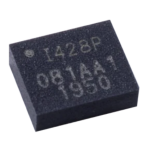
The TDK ICM-42688-P is a 6-axis MEMS motion tracking device that combines a 3-axis gyroscope and a 3-axis accelerometer. It has a configurable host interface that supports serial I3C, I2C and SPI communication (default). This sensor supports a highly accurate external clock input that helps reduce system-level sensitivity errors, improve orientation measurement from gyroscope data, and reduce ODR sensitivity to temperature and device drift – view details





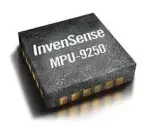
The TDK MPU-9250 is a 9-axis motion tracking device that combines a 3-axis gyroscope, a 3-axis accelerometer, a 3-axis magnetometer and a Digital Motion Processor (DMP). It offers programmable ranges for precise motion tracking: Gyroscope (±250, ±500, ±1000, ±2000°/sec), Accelerometer (±2g, ±4g, ±8g, ±16g) and Magnetometer (±4800μT) – view details





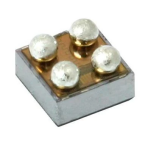
The AKM AK09919C is a 3-axis magnetometer with highly sensitive Hall sensor technology that detects the earth’s magnetism with a resolution of 0.15 μT and outputs the magnitude of the magnetic field in each of the X, Y and Z axes as a digital value (±4912μT) – view details.





Display

The Solomon Systech SSD1331 is a single chip CMOS OLED/PLED driver with 288 segments and 64 common cathode outputs supporting up to 96×64 RGB dot matrix displays. This device communicates via SPI and has a graphics acceleration command (GAC) with continuous horizontal, vertical and diagonal scrolling as well as a sleep mode and a power saving mode – view details





Motor Drives
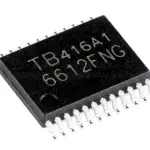
The Toshiba TB6612FNG is a compact dual-channel DC motor driver. It features two H-bridge circuits that can independently control the speed and direction of two motors, with a maximum continuous current of 1.2 A per channel (3.2 A peak). The IC operates with a maximum motor supply voltage of 15 V and supports a PWM frequency of up to 100 kHz to control the motor speed – view details






The Allegro A3967 is a complete microstepping motor driver with integrated translator. It is designed to operate bipolar stepper motors in full, half, quarter and eighth step modes, with an output drive capability of 30 V and ±750 mA – view details





Temperature, Humidity and Pressure

The Microchip MCP9843 is a digital temperature sensor that converts the temperature of -40°C and +125°C into a digital word. This sensor complies with the JEDEC specification TSE3000B3 Mobile Platform Memory Module Thermal Sensor Component. It offers an accuracy of ±0.2°C/±1°C (typical/maximum) from +75°C to +95°C – view details






The Bosch BMP581 is an absolute barometric pressure sensor. Its small dimensions, low power consumption and high performance allow it to be used in a wide range of applications. It can measure barometric pressure from 30 to 125 kPa with an accuracy of ±0.3 Pa (equivalent to ±2.5 cm difference in altitude) and temperature from -40 to 85°C with an accuracy of ±0.5°C – view details





Signal Conversion
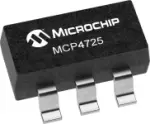
The Microchip MCP4725 is a single-channel buffered 12-bit DAC with voltage output and non-volatile memory (EEPROM). It can drive loads up to 1000 pF in parallel with 5 kΩ load resistance. User can store bits of the configuration register (2 bits) and DAC input data (12 bits) in the non-volatile EEPROM memory (14 bits) – view details





